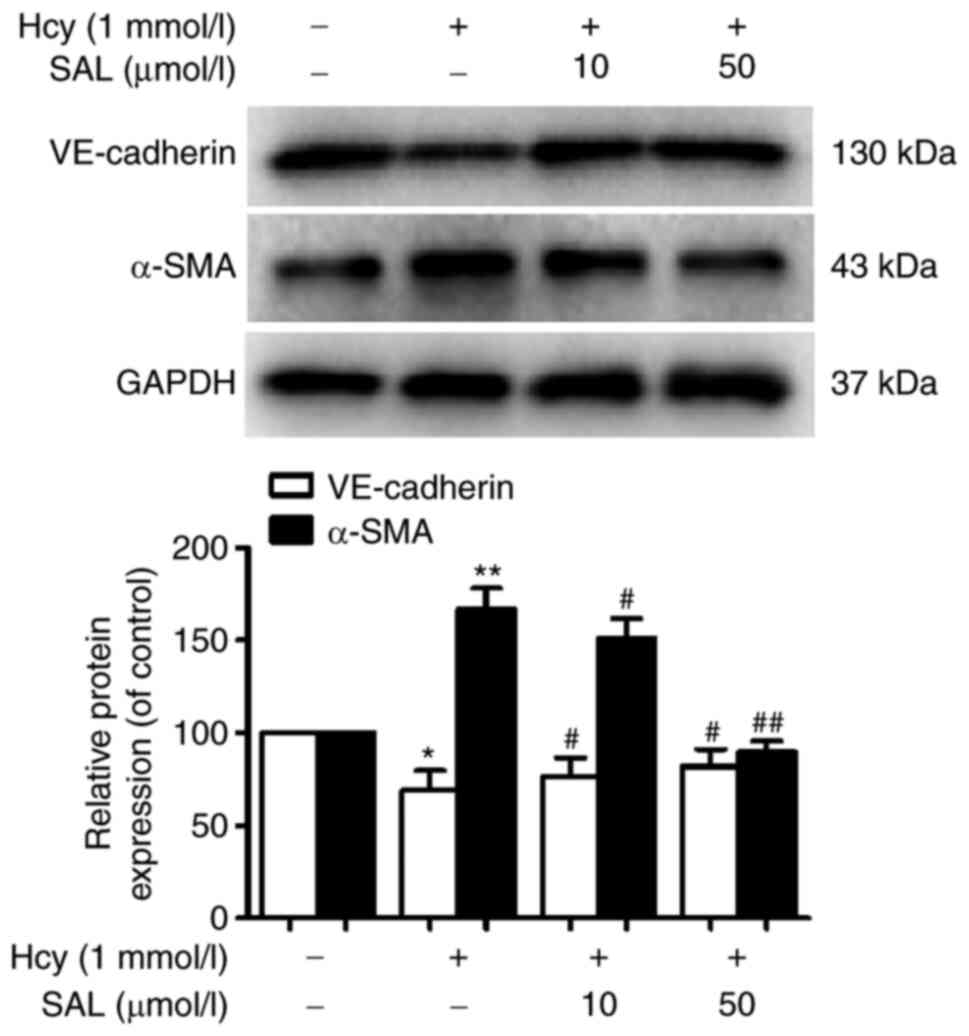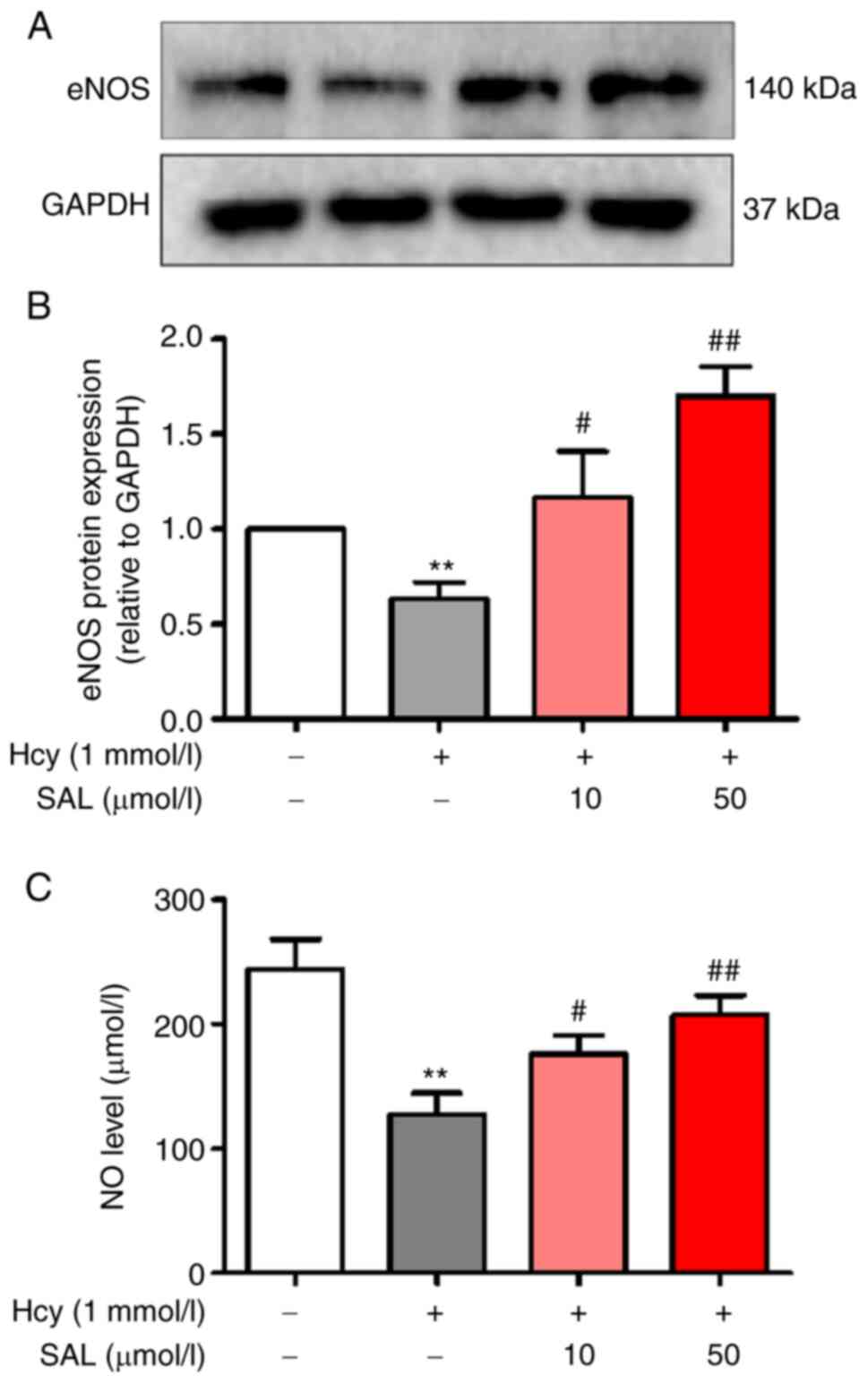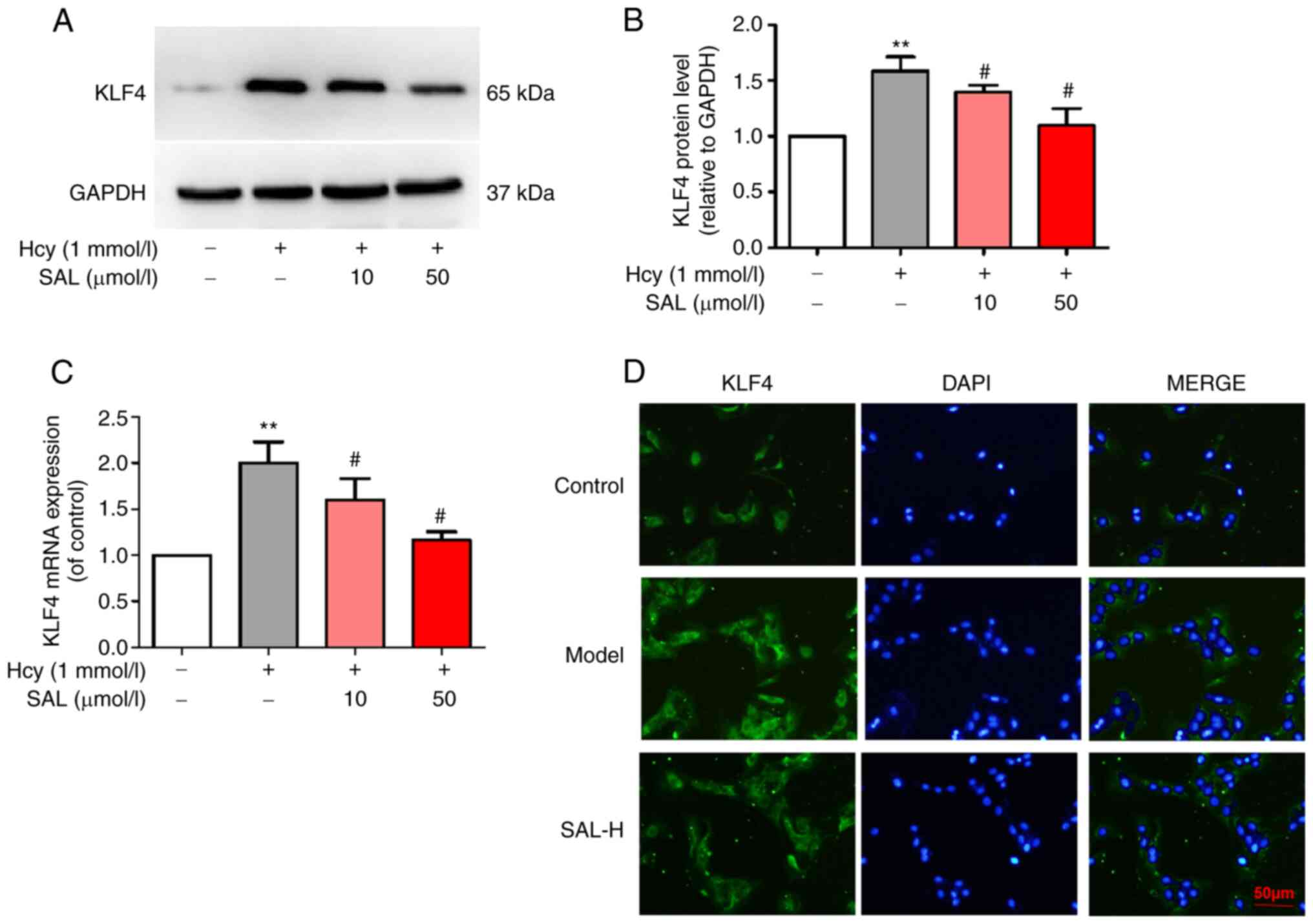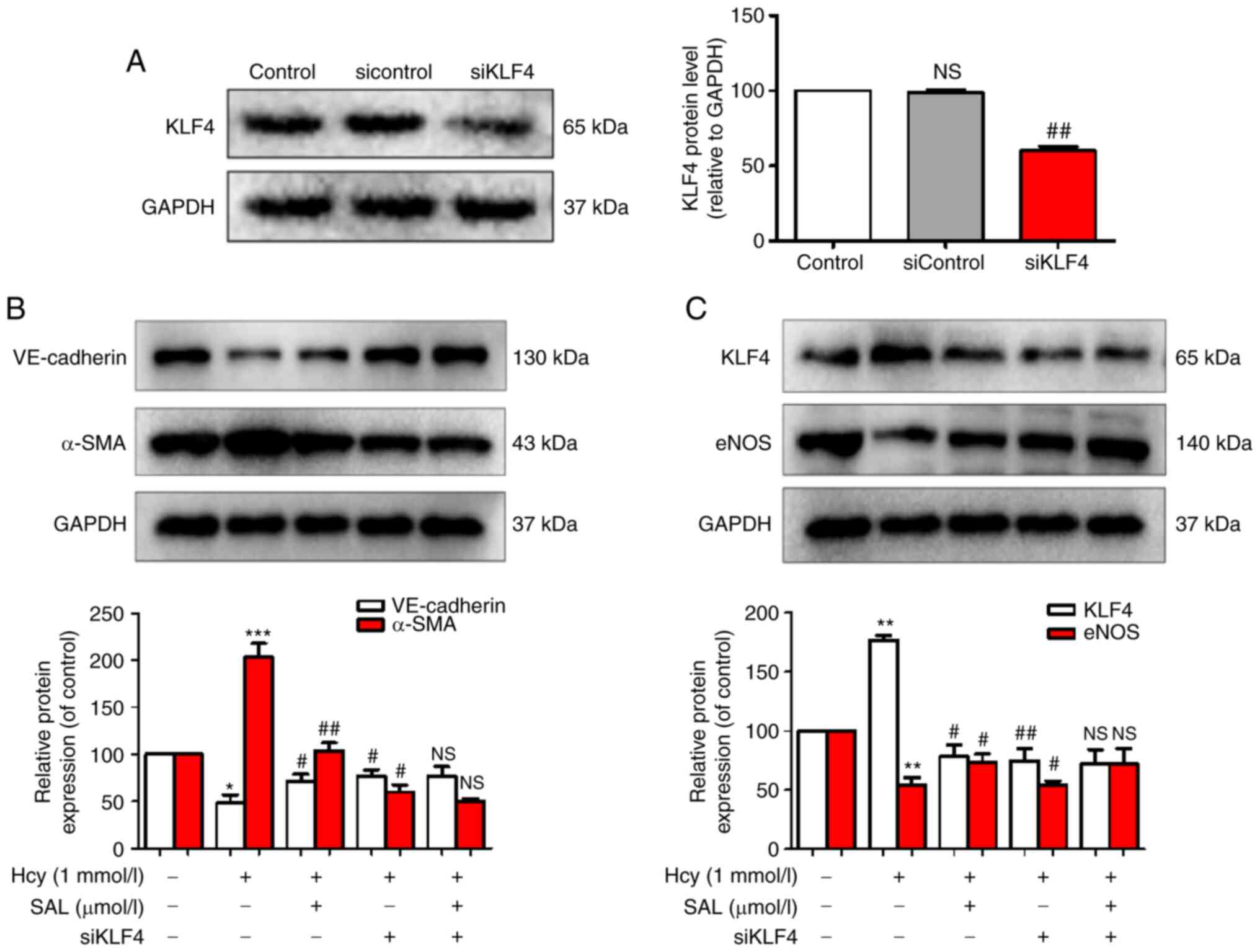|
1
|
Xu X, Friehs I, Hu TZ, Melnychenko I,
Tampe B, Alnour F, Iascone M, Kalluri R, Zeisberg M, Del Nido PJ
and Zeisberg EM: Endocardial fibroelastosis is caused by aberrant
endothelial to mesenchymal transition. Circ Res. 116:857–866. 2015.
View Article : Google Scholar : PubMed/NCBI
|
|
2
|
Bischoff J: Endothelial-to-mesenchymal
transition. Circ Res. 124:1163–1165. 2019. View Article : Google Scholar : PubMed/NCBI
|
|
3
|
Qin W, Zhang L, Li Z, Xiao D, Zhang Y,
Zhang H, Mokembo JN, Monayo SM, Jha NK, Kopylov P, et al:
Endothelial to mesenchymal transition contributes to
nicotine-induced atherosclerosis. Theranostics. 10:5276–5289. 2020.
View Article : Google Scholar : PubMed/NCBI
|
|
4
|
Wadhera RK, Steen DL, Khan I, Giugliano RP
and Foody JM: A review of low-density lipoprotein cholesterol,
treatment strategies, and its impact on cardiovascular disease
morbidity and mortality. J Clin Lipid. 10:472–489. 2016. View Article : Google Scholar : PubMed/NCBI
|
|
5
|
Guo Y, Li P, Bledsoe G, Yang ZR, Chao L
and Chao J: Kallistatin inhibits TGF-β-induced
endothelial-mesenchymal transition by differential regulation of
microRNA-21 and eNOS expression. Exp Cell Res. 337:103–110. 2015.
View Article : Google Scholar : PubMed/NCBI
|
|
6
|
Yoshida T, Yamashita M and Hayashi M:
Kruppel-like factor 4 contributes to high phosphate-induced
phenotypic switching of vascular smooth muscle cells into
osteogenic cells. J Biol Chem. 287:25706–25714. 2012. View Article : Google Scholar : PubMed/NCBI
|
|
7
|
Sun Q, Gong L, Qi R, Qing W, Zou M, Ke Q,
Zhang L, Tang X, Nie Q, Yang Y, et al: Oxidative stress-induced
KLF4 activates inflammatory response through IL17RA and its
downstream targets in retinal pigment epithelial cells. Free Rad
Biol Med. 147:271–281. 2020. View Article : Google Scholar : PubMed/NCBI
|
|
8
|
Zhong Z, Han J, Zhang J, Xiao Q, Hu J and
Chen L: Pharmacological activities, mechanisms of action, and
safety of salidroside in the central nervous system. Drug Des Devel
Ther. 12:1479–1489. 2018. View Article : Google Scholar : PubMed/NCBI
|
|
9
|
Zheng L, Su J, Zhang Z, Jiang L, Wei J, Xu
X and Lv S: Salidroside regulates inflammatory pathway of alveolar
macrophages by influencing the secretion of miRNA-146a exosomes by
lung epithelial cells. Sci Rep. 10:207502020. View Article : Google Scholar : PubMed/NCBI
|
|
10
|
Lai W, Xie X, Zhang X, Wang Y, Chu K,
Brown J, Chen L and Hong G: Inhibition of complement drives
increase in early growth response proteins and neuroprotection
mediated by salidroside after cerebral ischemia. Inflammation.
41:449–463. 2018. View Article : Google Scholar : PubMed/NCBI
|
|
11
|
Xing SS, Yang J, Li WJ, Li J, Chen L, Yang
YT, Lei X, Li J, Wang K and Liu X: Salidroside decreases
atherosclerosis plaque formation via inhibiting endothelial cell
pyroptosis. Inflammation. 43:433–440. 2020. View Article : Google Scholar : PubMed/NCBI
|
|
12
|
Zhu L, Jia F, Wei J, Yu Y, Yu T, Wang Y,
Sun J and Luo G: Salidroside protects against homocysteine-induced
injury in human umbilical vein endothelial cells via the regulation
of endoplasmic reticulum stress. Cardiovasc Ther. 35:33–39. 2017.
View Article : Google Scholar : PubMed/NCBI
|
|
13
|
Zhang Yanyan, He Li, Huang Mei, Jiang
Feng, Fu Lingyun and Li Jiachuan: Salidroside inhibits homocysteine
induced oxidative stress in human umbilical vein endothelial cells.
Journal of Southwest Minzu University (Natural Science Edition).
2020.46((04)): 349–353, (In Chinese).
|
|
14
|
Xing SS, Li J, Chen L, Yang YF, He PL, Li
J and Yang J: Salidroside attenuates endothelial cellular
senescence via decreasing the expression of inflammatory cytokines
and increasing the expression of SIRT3. Mech Ageing Dev. 175:1–6.
2018. View Article : Google Scholar : PubMed/NCBI
|
|
15
|
Livak KJ and Schmittgen TD: Analysis of
relative gene expression data using real-time quantitative PCR and
the 2(-Delta Delta C(T)) method. Methods. 25:402–408. 2001.
View Article : Google Scholar : PubMed/NCBI
|
|
16
|
Song S, Zhang R, Cao W, Fang G, Yu Y, Wan
Y, Wang C, Li Y and Wang Q: Foxm1 is a critical driver of
TGF-β-induced EndMT in endothelial cells through Smad2/3 and binds
to the snail promoter. J Cell Physiol. 234:9052–9064. 2019.
View Article : Google Scholar : PubMed/NCBI
|
|
17
|
van Putten S, Shafieyan Y and Hinz B:
Mechanical control of cardiac myofibroblasts. J Mol Cell Cardiol.
93:133–142. 2016. View Article : Google Scholar : PubMed/NCBI
|
|
18
|
Gimbrone MA Jr and García-Cardeña G:
Endothelial cell dysfunction and the pathobiology of
atherosclerosis. Circ Res. 19:620–636. 2016. View Article : Google Scholar : PubMed/NCBI
|
|
19
|
Song CL, Liu B, Shi YF, Liu N, Yan YY,
Zhang JC, Xue X, Wang JP, Zhao Z, Liu JG, et al: MicroRNA-130a
alleviates human coronary artery endothelial cell injury and
inflammatory responses by targeting PTEN via activating
PI3K/Akt/eNOS signaling pathway. Oncotarget. 7:71922–71936. 2016.
View Article : Google Scholar : PubMed/NCBI
|
|
20
|
Wang XJ, Tian DC, Wang FW, Zhang MH, Fan
CD, Chen W, Wang MH, Fu XY and Ma JK: Astaxanthin inhibits
homocysteine-induced endothelial cell dysfunction via the
regulation of the reactive oxygen species-dependent VEGF-VEGFR2-FAK
signaling pathway. Mol Med Rep. 19:4753–4760. 2019.PubMed/NCBI
|
|
21
|
Rajendran S, Shen X, Glawe J, Gopi K,
Kolluru GK and Kevil CG: Nitric oxide and hydrogen sulfide
regulation of ischemic vascular growth and remodeling. Compr
Physiol. 12:1213–1247. 2019. View Article : Google Scholar : PubMed/NCBI
|
|
22
|
Tan X, Feng L, Huang X, Yang Y, Yang C and
Gao Y: Histone deacetylase inhibitors promote eNOS expression in
vascular smooth muscle cells and suppress hypoxia-induced cell
growth. J Cell Mol Med. 21:2022–2035. 2017. View Article : Google Scholar : PubMed/NCBI
|
|
23
|
Liu S, Sun Z, Chu P, Li H, Ahsan A, Zhou
Z, Zhang Z, Sun B, Wu J, Xi Y, et al: EGCG protects against
homocysteine-induced human umbilical vein endothelial cells
apoptosis by modulating mitochondrial-dependent apoptotic signaling
and PI3K/Akt/eNOS signaling pathways. Apoptosis. 22:672–680. 2017.
View Article : Google Scholar : PubMed/NCBI
|
|
24
|
Arab HH, Salama SA and Maghrabi IA: Camel
milk attenuates methotrexate-induced kidney injury via activation
of PI3K/Akt/eNOS signaling and intervention with oxidative
aberrations. Food Funct. 9:2661–2672. 2018. View Article : Google Scholar : PubMed/NCBI
|
|
25
|
Li J, Xiang X, Xu H and Shi Y: Cilostazol
promotes angiogenesis and increases cell proliferation after
myocardial ischemia-reperfusion injury through a cAMP-dependent
mechanism. Cardiovasc Eng Technol. 10:638–647. 2019. View Article : Google Scholar : PubMed/NCBI
|
|
26
|
Zhang Y, Li C, Huang Y, Zhao S, Xu Y, Chen
Y, Jiang F, Tao L and Shen X: EOFAZ inhibits
endothelial-to-mesenchymal transition through downregulation of
KLF4. Int J Mol Med. 46:300–310. 2020.PubMed/NCBI
|



















